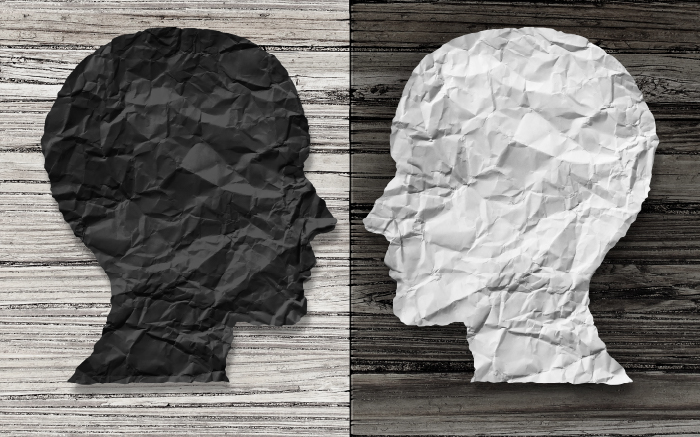In today’s fast-paced and ever-changing world, feelings of anxiety are not uncommon. For many, anxiety is a temporary response to stress or uncertainty. However, when these feelings become overwhelming and persistent and interfere with daily activities, they may indicate an underlying anxiety disorder.
Anxiety disorders encompass a range of conditions characterized by excessive fear or worry and are the most prevalent mental health disorders globally. Understanding and recognizing the signs of anxiety is the first step toward seeking help and managing symptoms effectively.
1. Excessive Worrying
One of the hallmark symptoms of anxiety is excessive worrying that is disproportionate to the event or situation causing it. This type of worry goes beyond everyday concerns, extending to intense, persistent, and often unrealistic fears about everyday situations.
- Differentiating Normal Worry from Anxiety-Related Worrying: Normal worry is a common stress reaction that typically resolves independently. In contrast, anxiety-related worrying is persistent and can significantly impair one’s ability to function daily.
- Impact on Daily Functioning: Excessive worrying can lead to difficulty making decisions, avoidance of certain situations, and physical symptoms such as fatigue or headaches.
- Seeking Help: Recognizing when worry is excessive is crucial. Cognitive-behavioral therapy (CBT) and mindfulness techniques are effective in managing anxiety-related worrying.
2. Restlessness or Feeling On Edge
Many individuals with anxiety describe a constant feeling of restlessness or being “on edge.” This symptom is often one of the first signs of anxiety disorders, especially in children and adolescents.
- Manifestations of Restlessness: Symptoms may include an inability to relax, feeling keyed up, or an overwhelming urge to move.
- Impact on Concentration and Sleep: Restlessness can severely impact one’s ability to focus and maintain a healthy sleep pattern, contributing to a cycle of anxiety and fatigue.
- Coping Strategies: Regular physical activity, relaxation techniques, and structured routines can mitigate feelings of restlessness.
3. Difficulty Concentrating
Anxiety can take a toll on one’s cognitive functions, particularly concentration. People with anxiety may find themselves easily distracted, unable to focus on the tasks at hand, or forgetting details.
- Anxiety and Cognitive Performance: Anxiety can cloud thinking, making it difficult to concentrate on work, studies, or even simple daily tasks.
- Effects on Performance: This symptom can lead to decreased productivity and mistakes at work or school, affecting overall performance and self-esteem.
- Tips for Improvement: Breaking tasks into smaller, manageable parts, practicing mindfulness, and setting aside specific times for work and breaks can help improve concentration.
4. Irritability
Increased irritability is a common but often overlooked symptom of anxiety. Individuals may feel unusually short-tempered, easily frustrated, or overly sensitive to seemingly minor annoyances.
- Link Between Irritability and Anxiety: Anxiety can heighten emotional responses, making individuals more prone to irritability.
- The strain on personal relationships: recognizing and addressing this symptom is vital as it can strain relationships with friends, family, and colleagues.
- Ways to Manage: Effective communication, stress-reduction techniques, and seeking professional counseling can help manage anxiety-associated irritability.
5. Sleep Disturbances
Anxiety can significantly affect sleep patterns, leading to difficulties falling asleep, staying asleep, or experiencing restful sleep. Nighttime anxiety can perpetuate a vicious cycle, as a lack of sleep can exacerbate anxiety symptoms.
- Cycle of Anxiety and Sleep Issues: Addressing sleep disturbances is crucial in managing anxiety, as poor sleep can worsen anxiety symptoms.
- Sleep Hygiene Tips: Establishing a regular sleep schedule, creating a comfortable sleep environment, and avoiding stimulants before bedtime can improve sleep quality.
Recognizing Anxiety in Yourself and Others
Identifying the symptoms of anxiety is the first step toward seeking help. It’s important to observe changes in your behavior or that of loved ones and not dismiss these signs as merely stress or temporary worries. Encouraging open conversations about mental health can foster a supportive environment for those experiencing anxiety.
When to Seek Professional Help
If you or someone you know is struggling with anxiety, it’s important to seek professional help. Mental health professionals can provide a diagnosis and recommend effective treatment options, which may include therapy, medication, or lifestyle changes. Remember, seeking help is a sign of strength, not weakness.
Recognizing the signs of anxiety is crucial to taking the first step toward managing and overcoming this condition. By understanding the top five symptoms of anxiety—excessive worrying, restlessness, difficulty concentrating, irritability, and sleep disturbances—you can better identify when it’s time to seek professional help.
Remember, anxiety is treatable, and with the right support and strategies, it’s possible to lead a fulfilling and balanced life. Let’s embrace the journey towards mental wellness together, offering support, understanding, and hope to those affected by anxiety.






